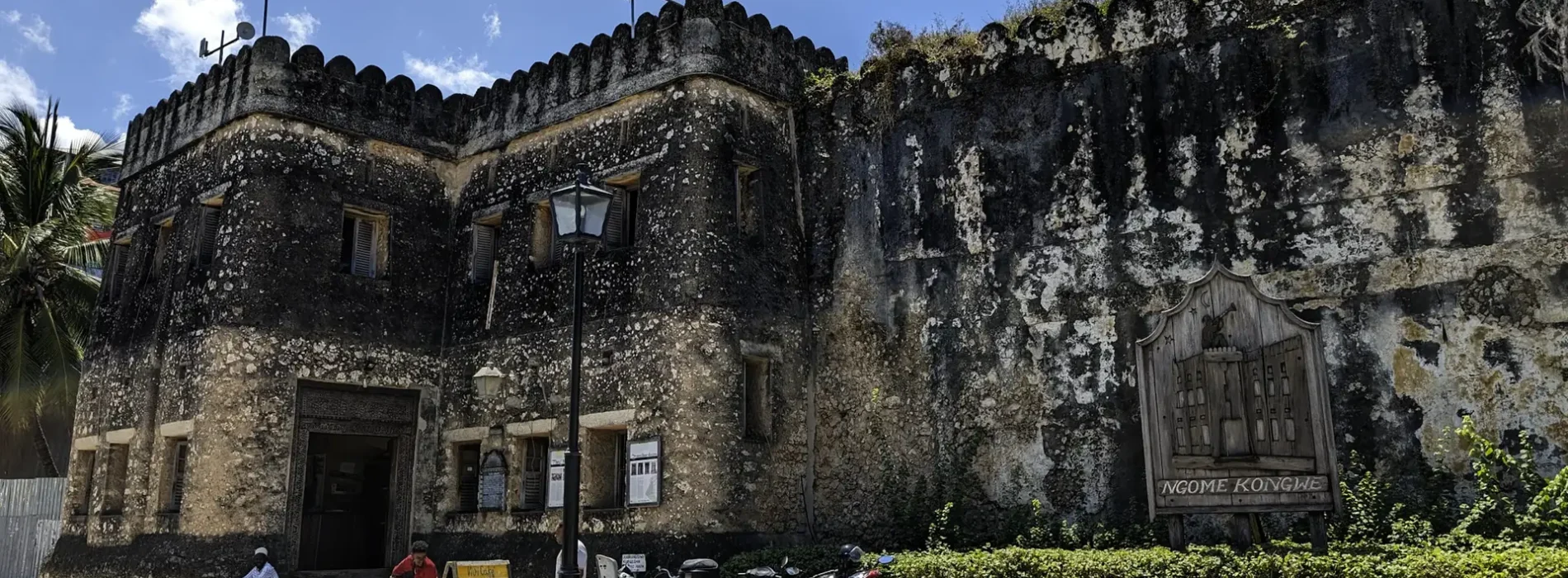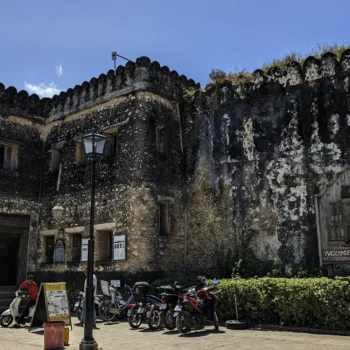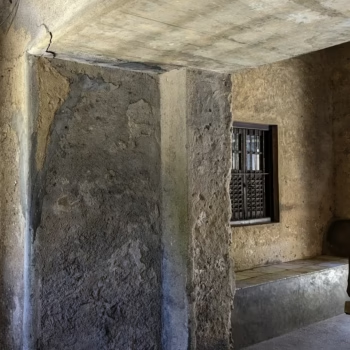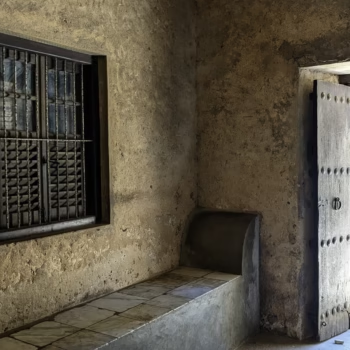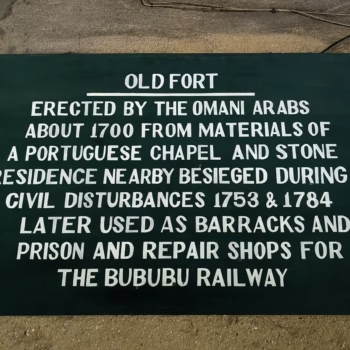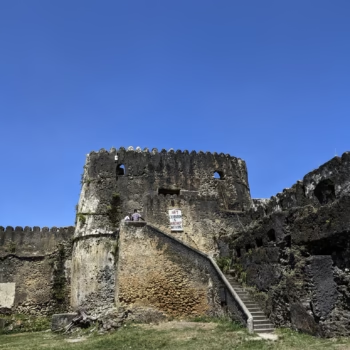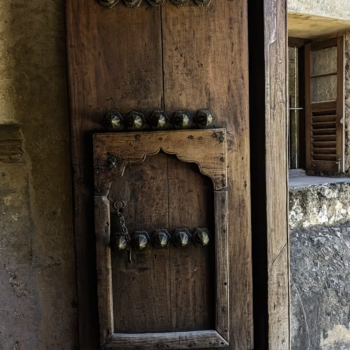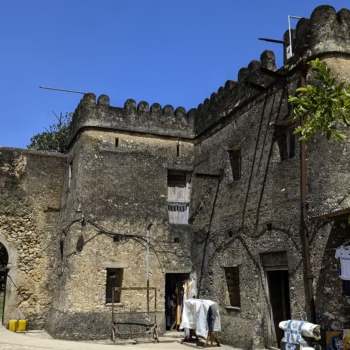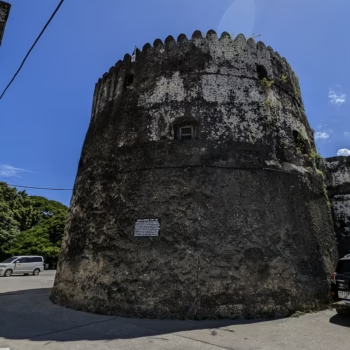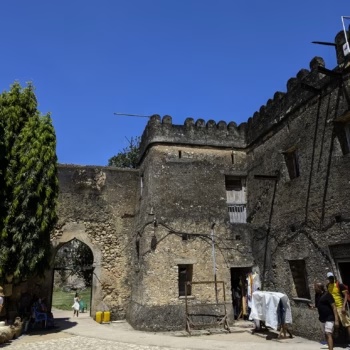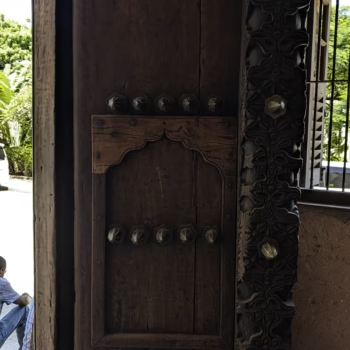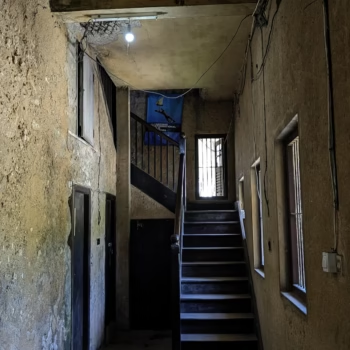Old Fort (Ngome Kongwe)
The Old Fort, also known as Ngome Kongwe, stands as a significant historical monument in Zanzibar Town. Erected by the Busaidi Omani Arabs in the early 1700s, this ancient structure served as a vital defense after the Arabs expelled the Portuguese from the East African coast in 1699. It protected against both the Portuguese and the rival Mazrui Omani group from Mombasa. Built on the site of a former Portuguese church dating from 1598 to 1612, remnants of this old church are still visible within the main courtyard.
During the 19th century, the fort underwent further expansion and served as a prison and the quarters for Sultan’s Bauchi bodyguards. Iron guns were positioned along the sea front at Forodhani, and the main market thrived just outside its walls. The Swahili word for prison, gereza, is believed to originate from the Portuguese word ireja, meaning church.
In the early 20th century, specifically from 1905 to 1928, the fort served as a depot for the railway line connecting Zanzibar Town to Bububu. Following the removal of the railway in 1946, a new gatehouse was constructed, and the main courtyard was repurposed as a ladies’ tennis club. A notable addition was a large door with a smaller inset door, taken from the residence of Sultan Humoud B. Muhammad’s brother. However, the fort gradually fell into disrepair after the onset of the 1964 Revolution.
In 1994, a portion of the fort was transformed into an open-air theatre. The renovation carefully blended creativity with respect for the original architecture, with seating arranged in an amphitheatre layout. The fort’s outer walls, along with the nearby House of Wonders, provided a picturesque backdrop for performances. Today, after restoration, the fort is accessible to tourists, offering the opportunity to explore its battlements and towers.
Excavations have revealed evidence suggesting that the Old Fort may have been the location of a significant Swahili town dating back to the 11th century. It is believed to have potentially included part of the palace of the Shirazi Queen Fatuma.
Interesting Facts About The Old Fort (Ngome Kongwe)
- Known also as The Arab Fort, it is the oldest building in Zanzibar.
- Excavations indicate that the Old Fort may have been the site of a significant Swahili town from the 11th century, possibly including a part of the Shirazi Queen Fatuma’s palace.
- The fort was built on the foundation of a Portuguese Chapel constructed between 1598 and 1612.
How to Get There
You can easily access The Old Fort by road in Zanzibar Town. From the ferry terminal or the famous Forodhani Garden, the fort is just a short minute’s walk away. At the fort, you can explore the old structures, browse local vendors and markets, and visit several offices now used for tourism activities. Adjacent to the fort is the House of Wonders, which was the first building in Zanzibar to have electricity and the first in East Africa with an elevator. Sadly, the House of Wonders collapsed in 2020, and as of March 2024, its renovation was ongoing, and it was inaccessible.
